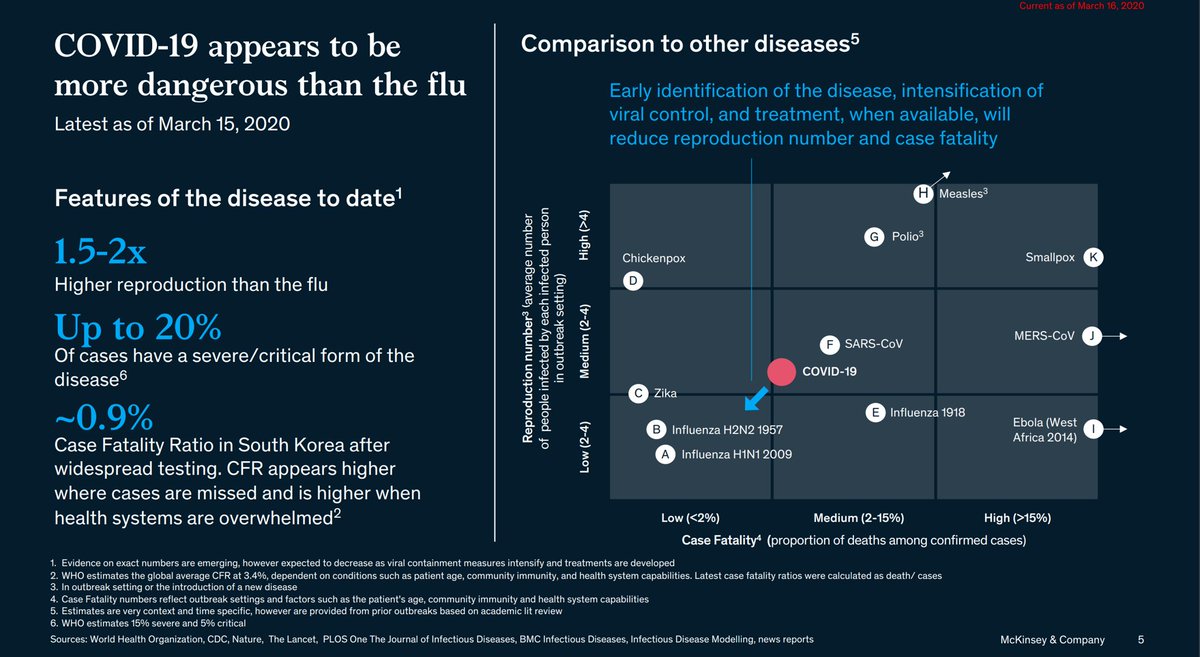There is a LOT of uncertainty / conflicting information, layered onto a LOT of speculation.
So, a roundup of links + charts (with links to sources) and some #SundayThoughts 🤔
A lot of 🗨️ asking whether people / biz / gov'ts are OVER or UNDER-reacting to #COVID19.
I think this Q drives
- emotional responses (anger, outrage, fear)
- inflammatory politicization (blame-based narratives)
Which I find unhelpful/distracting, bc this:
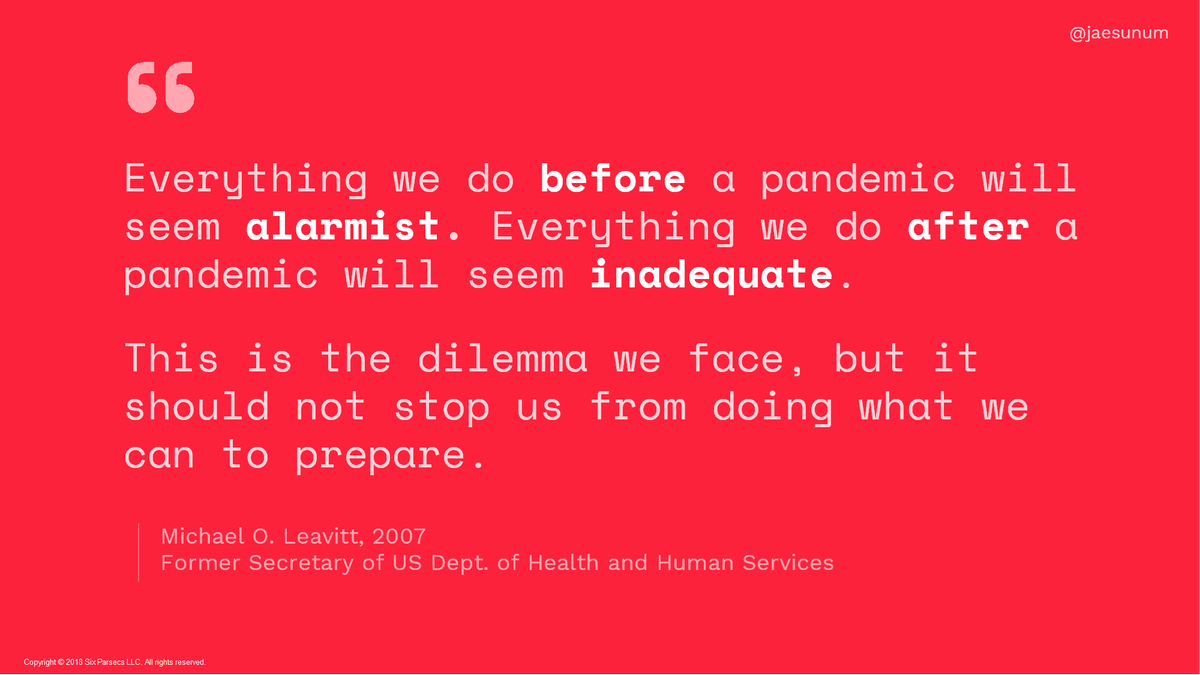
In fluid, rapidly evolving situations w/ incomplete info, vague critiques are just noise.
Better Q:
- WHICH actions are MOST LIKELY to be effective in protecting ourselves and each other, based on best available info re (a) #COVID19 (b) measures being taken in my area?
What do (we think) we know re #COVID19 so far?
Generally speaking
- extremely high transmission rates
- relatively low fatality rates
Suggesting
- low individual risk
- high systemic risk
Read on for implications.
Source: McKinsey (3/9/20) tinyurl.com/vunsjed
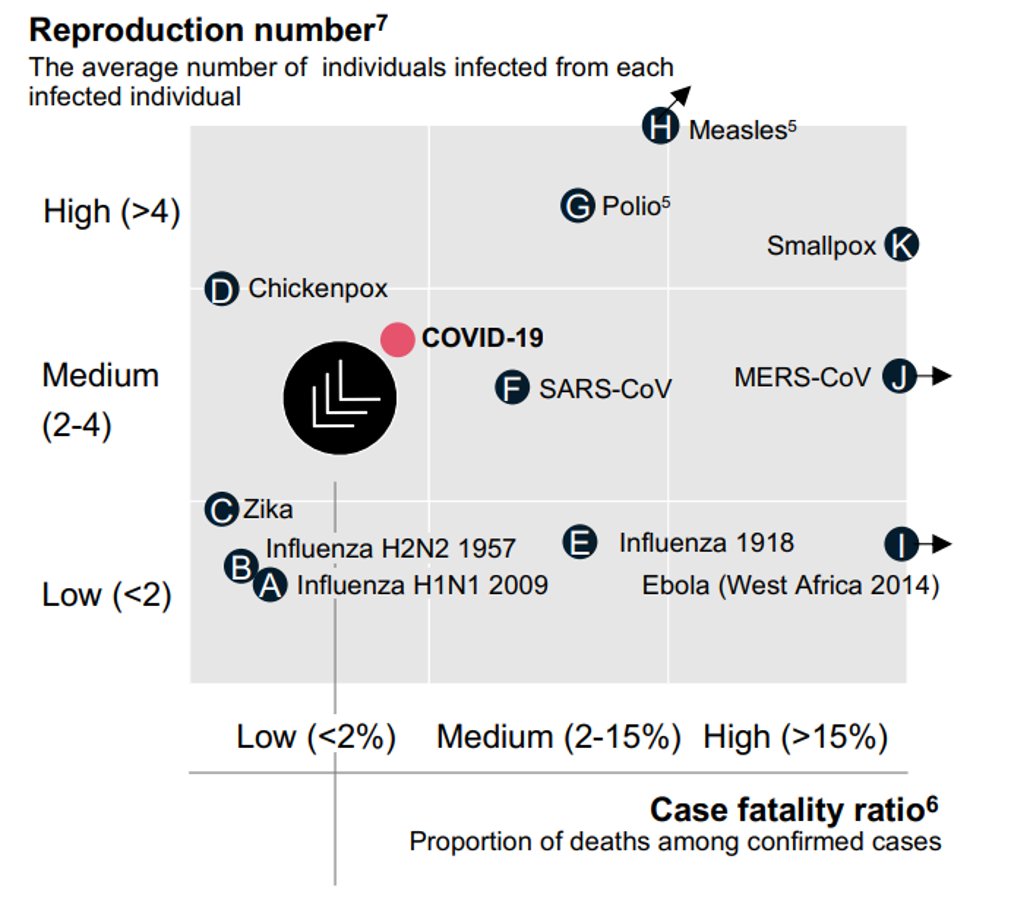
Many factors contribute to ACTUAL differences in fatality rates in 2 major buckets:
- WHO gets it
- HOW effectively they're treated
(Again, bc we are working with incomplete info, we know ⬆️about WHO is at higher risk, ⬇️↔️❓ about HOW to treat... but more on that later)
This gives a pretty good clue to help interpret varying figures reported in other clusters.
Italy's underlying demographics explain IN PART the very high fatality rate:
- 23% of residents 65 or older (vs. 15% in US)
- median age 47.3 (vs 38.3 in US)
Source: NYTimes
This also reminds us that reliability + utility of reported figures are dependent on other factors, chief among them TESTING.
Limited testing is highly likely to...
- UNDERSTATE scope/pace of transmission
- UNDERSTATE # confirmed cases
- OVERSTATE fatality rates
🇰🇷 tested aggressively (KCDC as of 3/15)
- 268k total = 5.3k per million
🇮🇹 tested less (Official #⃣ as of 3/13)
- 86k total = 1.4k per million
⚠️ Stressing these points, by shouting:
- DATA CAN BE MISLEADING WITHOUT PROPER CONTEXT
- DATA COLLECTION MATTERS, A LOT
Going back to the Q of "how deadly is #COVID19" I see a LOT of comparisons to the flu. This is ALSO NOT HELPFUL.
We THINK we understand the flu bc it is familiar, but most likely have a poor understanding of "how deadly the flu is" bc WE ARE BAD WITH TINY PROBABILITIES.
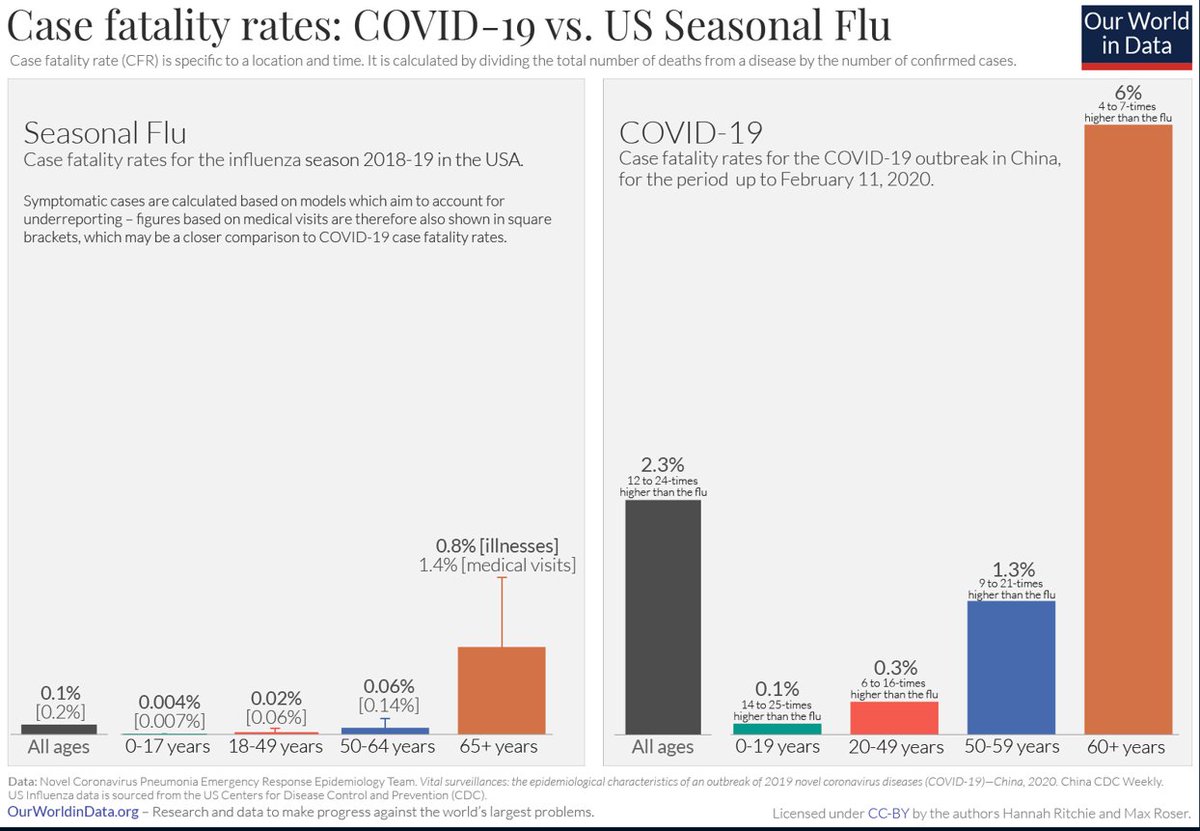
So available data says #COVID19 is deadlier than the flu, but that's not very meaningful bc both figures being compared
- are too small for people to grasp easily
- generate skewed multiples that CONFUSE more than CLARIFY
- encourage both OVERreaction and UNDERreaction
So let's try again. If you're young & relatively healthy, the individual risk to you is low. On that basis, travel restrictions, canceling large events, TP shortage, etc may seem like panic / hysteria.
This is INCORRECT bc many reasons, but mostly bc of SYSTEMIC RISK.
Going beyond fatality rates...
Time to recovery according to WHO (tinyurl.com/vjrnn3g)
- mild cases ~2 weeks
- severe/critical cases 3-6 weeks
For more useful, experiential comparisons
- mild cases are roughly like the flu
- severe cases are roughly like pneumonia
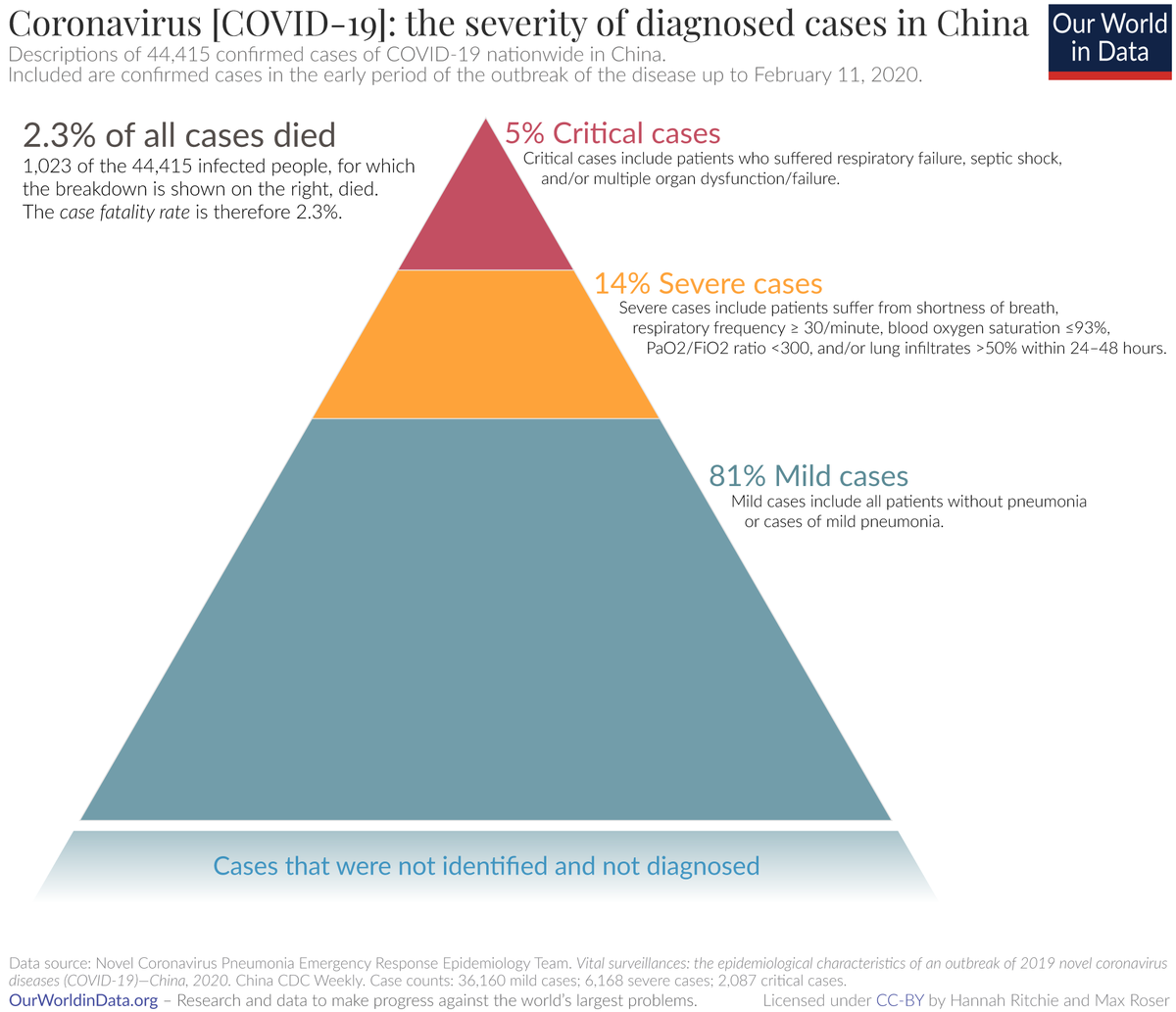
Remember from ⬆️ how #COVID19 is HIGHLY contagious?
⚠️Examples of systemic risks
- lots (and lots) of people getting ill
- about 1 in 5 of sick people getting REALLY ill
- lots of people too ill to work for a few weeks
- more ill people than the health system can handle
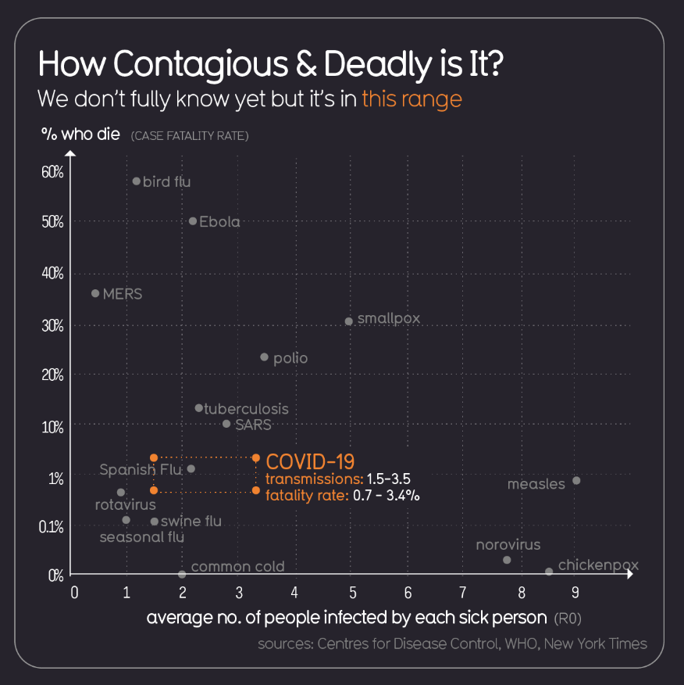
If/when pandemics reach a tipping point & exceed the capacity of health systems to function effectively, MORE PEOPLE DIE
Those deaths will still be skewed toward the elderly and (sadly) socioeconomically underprivileged. But at least some of these deaths are preventable
McKinsey report updated as of today: tinyurl.com/tvg4zgc
"Case Fatality Ratio appears higher where cases are missed and is higher when health systems are overwhelmed"
Yep.
